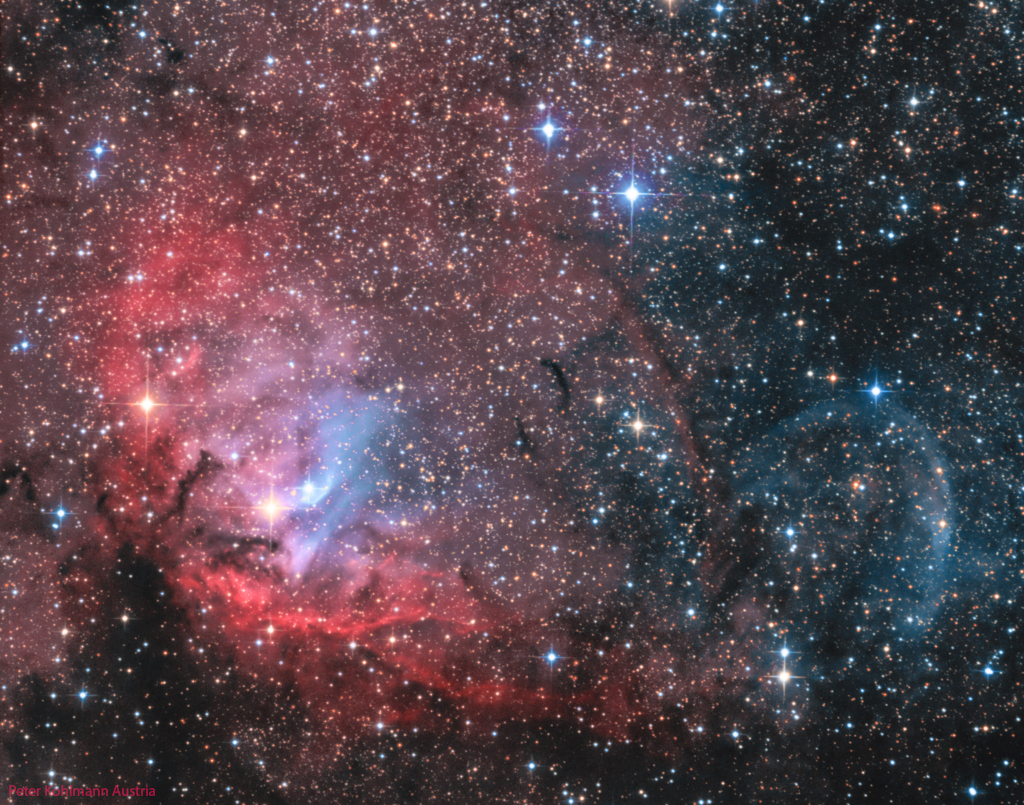2022年9月1日
The Tulip and Cygnus X-1
Image Credit & Copyright: Peter Kohlmann
Explanation: Framing a bright emission region, this telescopic view looks out along the plane of our Milky Way Galaxy toward the nebula rich constellation Cygnus the Swan. Popularly called the Tulip Nebula, the reddish glowing cloud of interstellar gas and dust is also found in the 1959 catalog by astronomer Stewart Sharpless as Sh2-101. Nearly 70 light-years across, the complex and beautiful Tulip Nebula blossoms about 8,000 light-years away. Ultraviolet radiation from young energetic stars at the edge of the Cygnus OB3 association, including O star HDE 227018, ionizes the atoms and powers the emission from the Tulip Nebula. Also in the field of view is microquasar Cygnus X-1, one of the strongest X-ray sources in planet Earth’s sky. Blasted by powerful jets from a lurking black hole its fainter bluish curved shock front is only just visible though, beyond the cosmic Tulip’s petals near the right side of the frame.
Back to School? Learn Science with NASA
Tomorrow’s picture: pixels in space
郁金香星云与天鹅座X-1
影像提供与版权: Peter Kohlmann
说明: 这幅以明亮发射星云为主题的望远镜影像,远眺银河盘面上满布星云的天鹅座。这团称为郁金香星云的明亮气体与尘埃云,也是天文学家夏普勒斯在1959年发表的星表里,编录号为Sh2-101的天体。这朵宽约70光年形状复杂的美丽“花朵”,约绽放在8,000光年远处。位在天鹅OB3星协边缘的年轻活跃O型星HDE 227018,所发出的紫外辐射电离并驱动郁金香星云发光。此外,在这片视野里,还有地球天空中最强烈的X射线源之一、微类星体天鹅座X-1。在影像右侧的郁金香星云花瓣外头,可隐约见到受到一颗隐藏黑洞的强烈喷流之冲击,所形成的泛蓝弓形激震波前沿。
回到学校?与NASA一起学习科学
明日的图片: pixels in space



